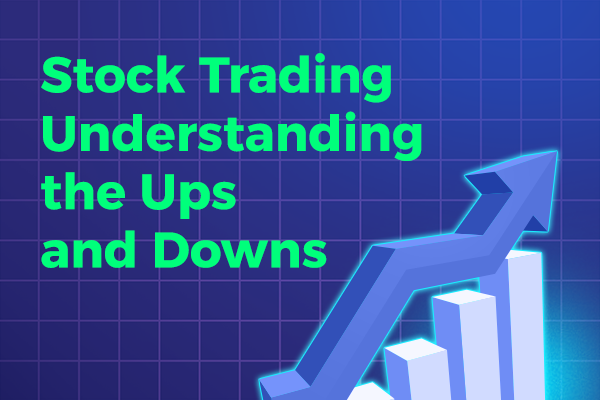Welcome to our Guide of the roles of traders and investors in the financial markets. While both groups contribute to the dynamic nature of the markets, their roles differ greatly. Traders are focused on short-term gains through active buying and selling of financial assets, whereas investors take a more long-term approach to building wealth and stability in their portfolios.
Traders and investors drive the financial markets in unique ways, making it essential to understand their roles and contributions. In recent years, the rise of online trading platforms has expanded opportunities for traders and investors alike, creating a need for effective investment strategies.
Key Takeaways:
- Traders and investors have different objectives and time horizons in the financial markets.
- The rise of online trading platforms has created new opportunities for both groups.
- Effective investment strategies are essential for success in the financial markets.
The Role of Traders
Traders play a crucial role in the financial markets, engaging in online trading platforms and the stock market to provide liquidity and facilitate price discovery. They use market analysis to make informed decisions, taking advantage of short-term price fluctuations to make profits.
With the rise of online trading platforms, traders can execute trades at lightning-fast speeds, enabling them to capitalize on even the smallest price movements. They rely on their expertise, experience, and intuition to identify profitable opportunities and manage risks.
Market analysis is a vital tool for traders, helping them to understand market trends, identify potential price movements, and develop effective trading strategies. They use a range of tools and techniques, including fundamental analysis, technical analysis, and quantitative analysis, to make informed decisions.
The Role of Traders in Driving Market Liquidity and Price Discovery
Traders facilitate market liquidity by providing the market with a continuous flow of buy and sell orders. This helps to ensure that there is always someone willing to buy or sell an asset at any given time, ensuring that the market remains efficient and accessible to all participants.
Price discovery is another critical role played by traders, as they help to determine the fair market value of assets. By buying and selling assets based on their assessments of their relative values, traders help to establish a consensus on prices, ensuring that the market reflects the available information and factors affecting supply and demand.
“Traders facilitate market liquidity by providing the market with a continuous flow of buy and sell orders.”
Overall, traders play a vital role in the financial markets, providing liquidity, facilitating price discovery, and contributing to the overall efficiency of the market. Their expertise and experience are essential for anyone looking to enter the market or explore investment opportunities.
The Role of Investors
Investors play a critical role in the financial markets. As opposed to traders, investors typically have a long-term approach to the market and focus on securing stable returns over time.
When it comes to investment opportunities, investors have a wide range of options available to them. One popular option for investors is stock trading, where they buy and hold shares in companies that they believe will perform well in the future. Another option is mutual funds, which allow investors to pool their money with other investors to create a diversified portfolio managed by a professional fund manager.
Effective portfolio management is essential for investors looking to achieve their investment objectives. By diversifying their portfolios across different asset classes, industries, and geographies, investors can mitigate risk and balance their returns. Additionally, portfolio rebalancing can help investors maintain their desired asset allocation and manage their risk effectively.
Differences Between Traders and Investors
While both traders and investors participate in the financial markets, they have distinct differences in their objectives, time horizons, and risk tolerance levels.
Objectives: Traders primarily focus on short-term profits, capitalizing on market fluctuations to earn a profit. In contrast, investors take a long-term approach, seeking to build wealth over time through investments that provide steady returns.
Time Horizons: Traders usually hold onto their investments for a short period, often just a few days or even hours. Investors, on the other hand, are more patient, holding their investments for years, if not decades.
Risk Tolerance Levels: Traders are typically willing to take on higher levels of risk, as they aim to earn substantial returns in a short amount of time. Investors, however, tend to be more conservative, prioritizing the preservation of their capital over the pursuit of high returns.
These differences are reflected in their investment strategies. Traders employ a variety of techniques such as technical analysis and algorithmic trading to capitalize on market movements. In contrast, investors often focus on portfolio diversification and a buy-and-hold strategy to build wealth over time.
Conclusion
In conclusion, traders and investors play critical roles in the financial markets. Traders contribute to market liquidity and price discovery through their engagement in online trading platforms, involvement in the stock market, and use of market analysis. Investors, on the other hand, provide stability and capital to the market by employing a long-term approach and effective portfolio management.
While traders and investors differ in their objectives, time horizons, and risk tolerance levels, it is essential to understand their roles to participate in the market or explore investment opportunities effectively. By collaborating, traders and investors drive the fast-paced financial markets and provide individuals with a range of investment opportunities.
FAQ
Q: What is the difference between traders and investors?
A: Traders and investors have distinct roles in the financial markets. Traders are actively involved in buying and selling financial instruments, such as stocks, currencies, and commodities. They engage in market analysis and make short-term decisions to profit from price fluctuations. On the other hand, investors focus on long-term investment strategies. They seek to build portfolios and hold assets over extended periods to generate returns.
Q: What is the role of traders in the financial markets?
A: Traders play a crucial role in driving market liquidity and price discovery. They engage in online trading platforms and participate in the stock market, executing buy and sell orders. Traders use various trading strategies and rely on market analysis to make informed decisions. Their activity contributes to the efficient functioning of financial markets.
Q: What is the role of investors in the financial markets?
A: Investors provide stability and capital to the financial markets. They explore various investment opportunities, such as stock trading, to grow their wealth over the long term. Investors focus on portfolio management and take a more patient approach, aiming for consistent returns. Their participation encourages economic growth and supports businesses.
Q: What are the main differences between traders and investors?
A: Traders and investors differ in their objectives, time horizons, and risk tolerance levels. Traders typically seek short-term profits and are willing to take higher risks. They employ different trading strategies, such as day trading or swing trading. Investors, on the other hand, have longer time horizons and are more focused on wealth accumulation over time. They typically have lower risk tolerance and adopt strategies like value investing or dividend investing.
Q: Why is it important to understand the roles of traders and investors?
A: Understanding the roles of traders and investors is crucial for individuals looking to participate in the financial markets or explore investment opportunities. It allows them to align their objectives and strategies with the appropriate role. Whether one aims for short-term trading or long-term investing, comprehending these roles can help make informed decisions and better navigate the dynamic world of finance.

